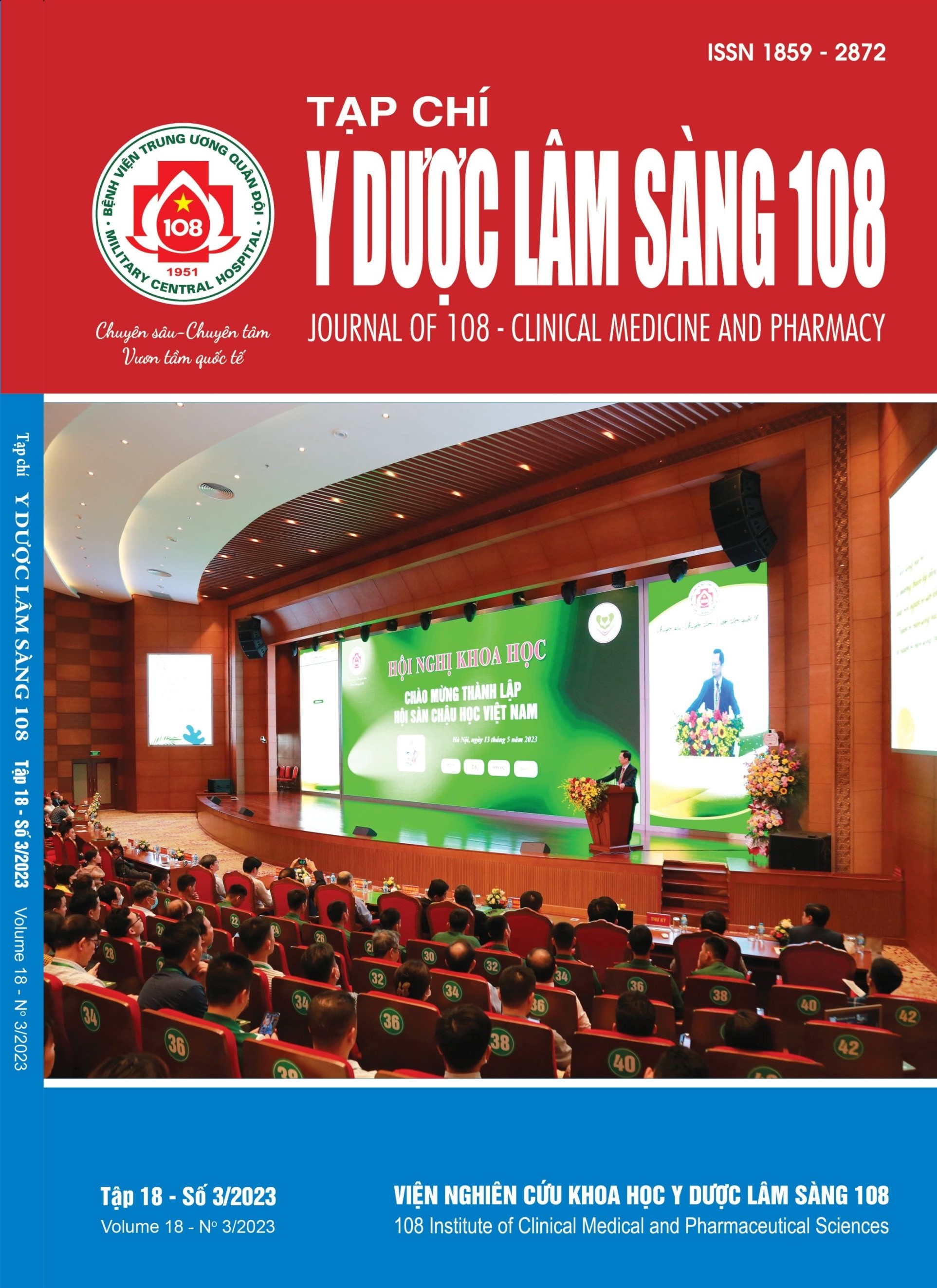Research characteristics of depressive and post-traumatic stress in long-COVID-19 patients, using PHQ-9, PCL-5 scores at Saint Paul General Hospital
Main Article Content
Keywords
Abstract
Objective: To determine the prevalence and relationship of depressive disorder and post-traumatic stress disorder in patients with prolonged COVID-19 to propose measures for early detection, screening, diagnosis, and treatment management. Subject and method: The study used a cross-sectional descriptive research method; 378 patients with prolonged COVID-19; using the PHQ-9 Questionnaire to assess depression; the PCL-5 questionnaire assesses traumatic stress disorder. Result: The proportion of patients with depression was 16.1%, of which: 11.1% had mild depression, moderate depression accounted for 4%, and 1% had major depression. The percentage of patients with post-traumatic stress disorder on the PCL-5 scale was 1.3%. Women have a higher rate of depression than men. The age group ≥ 50 was 2.9 times more likely to have depression than the age group < 50, p=0.007. The group of patients with many symptoms in the acute phase was 2.2 times more likely to have depression than the group with few symptoms, p=0.035. The patients who were very worried about complications of COVID-19 were 4.8 times more likely to develop depression than those with little/no anxiety, p=0.000. The group of patients who feared being stigmatized had a higher probability of depression 2.709 than the group without fear, p=0.013. Conclusion: Most have mild depression; factors associated with the depressive disorder include age ≥50 years, high anxiety about complications of COVID-19, anxiety about stigma, ≥ 5 symptoms in the acute phase.
Article Details
References
2. UK Office for National Statistics (2021) Prevalence of ongoing symptoms following Coronavirus (COVID-19) Infection in the UK. 1 April 2021; ONS: London, UK, 2021.
3. Carfì A, Bernabei R, Landi F (2020) Persistent Symptoms in Patients After Acute COVID-19. JAMA, 324(6): 603-605.
4. Arnold DT, Hamilton FW, Milne A (2021) Patient outcomes after hospitalisation with COVID-19 and implications for follow-up: Results from a prospective UK cohort. Thorax 76(4): 399-401.
5. Hanson SW, Abbafati C, Aerts JG et al (2022) A global systematic analysis of the occurrence, severity, and recovery pattern of long COVID in 2020 and 2021. medRxiv, 2022.05.26.22275532.
6. WHO (2021) A clinical case definition of post COVID-19 condition by a Delphi consensus. 1.
7. Huang C, Huang L, Wang Y (2021) 6-month consequences of COVID-19 in patients discharged from hospital: A cohort study. Lancet 397(10270): 220-232.
8. Mannan A, Mehedi HMH, Chy NUHA (2021) A multi-centre, cross-sectional study on coronavirus disease 2019 in Bangladesh: clinical epidemiology and short-term outcomes in recovered individuals. New Microbes New Infect 40: 100838.
9. Xu F, Wang X, Yang Y (2022) Depression and insomnia in COVID-19 survivors: A cross-sectional survey from Chinese rehabilitation centers in Anhui province. Sleep Med 91: 161-165.
 ISSN: 1859 - 2872
ISSN: 1859 - 2872
